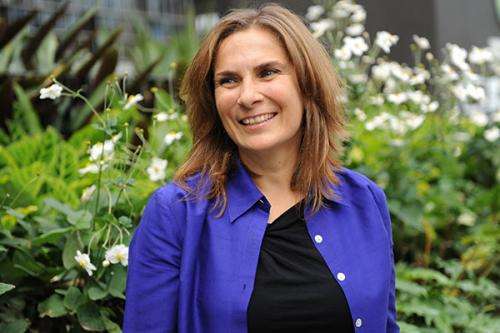Precipitating urine into dry fertiliser

The next time you 'take a leak', consider the valuable resources you're flushing away.
"Urine contains all the essential components for plant growth, such as phosphorus, nitrogen and potassium," says Chancellor's Postdoctoral Research Fellow Dr Dena Fam.
"Yet our sewers carry these nutrients essential for agricultural production away from our urban centres and discharge them into waterways where they have the potential to negatively impact aquatic ecosystems."
Fam is a driving force in Australian and international research on urine diversion systems. As a result of her PhD research, UTS's new Engineering and Information Technology building is installed with urine diversion (UD) pipework and the Barangaroo development in Sydney's CBD has incorporated it into their design plans.
Completed last year under the supervision of Institute for Sustainable Futures (ISF) Deputy Director Cynthia Mitchell, Fam's PhD examined the transdisciplinary issues associated with trialling urine diverting systems in Australia, to determine how viable urine recovery and reuse is in practice.
It's a squeamish topic, acknowledges Fam, a researcher with ISF and the Centre for Management and Organisation Studies in the UTS Business School.
But with global pressure on food production and infrastructure due to rapidly growing urban populations, recovering and reusing urine as a fertiliser for crop production is an opportunity we can't afford to pass up.
Fam first became interested in sustainable sanitation while studying industrial design at the University of Western Sydney in 2006, where she developed a prototype of an upmarket composting toilet system for a Melbourne company. During this time she began to question the technological focus of design.
"As I began teaching industrial design students, it became clear that you need a whole-of-system approach for an innovative technology to fulfil its sustainability potential," says Fam.
Fam commenced her PhD research at ISF in 2008, trialling UD systems at UTS and in Melbourne to address institutional, organisational and regulatory issues, and investigate public acceptance of this new and unfamiliar technology.
To do this Fam, Mitchell and fellow ISF researcher Kumi Abeysuriya actively sought perspectives and expertise from five university faculties, state and local government, industry partners from the water, sanitation and horticultural sectors, UTS's Facilities Management Unit and contractors.
They also invited UTS design students to help produce visual communication tools to educate and engage feedback from users of the new toilets.
Fam's current postdoctoral research extends this work, by taking a transdisciplinary approach to analysing urine diversion systems on a global scale in Europe, Asia and the United States. And it is already attracting plenty of international interest.
Fam has recently developed a relationship with Nanyang Technical University in Singapore, which is working in a similar field developing technology to precipitate urine so it might be more readily used as a dry fertiliser.
"We're looking at exchanging knowledge with Nanyang University and in the future hope to precipitate urine on-site at UTS. It will be a game-changer and keep UTS at the forefront of this research field."
Provided by University of Technology, Sydney

















